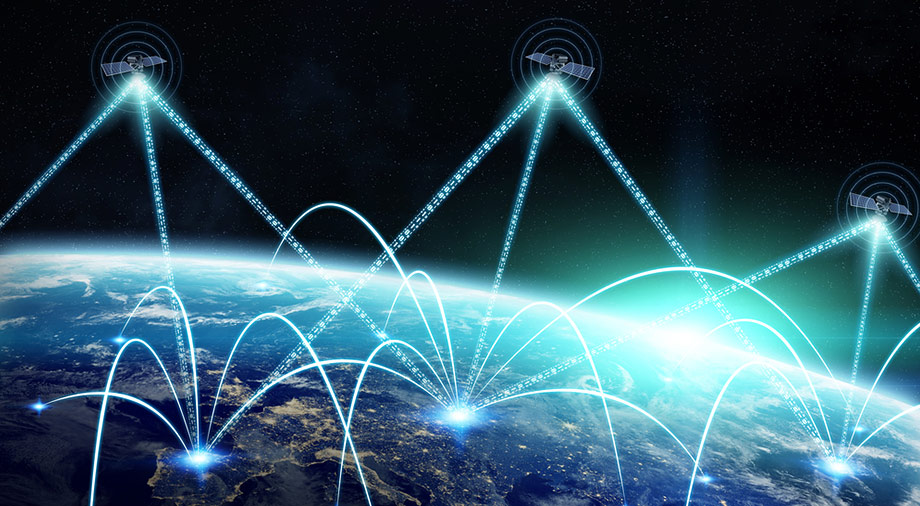Over the next decade, more than 100,000 new satellites will be launched into orbit, new orbital stations will be built, the rules for operating in space will change, and new jobs will emerge
September 2031. It’s a typical working day at the U.S. Space Force base in Vanderberg, California. Technicians are conducting final checks before the launch of a reusable rocket. Tomorrow, the rocket will deliver 1,000 satellites to orbit, another record delivery for a single launch – the latest in a long series of humankind’s exploration of the cosmos, the seeds of which were laid in 1957.
These are satellites that Earth’s residents will be able to watch for a long time to come. They will resemble a “star train”, which will soon become part of a galaxy of satellites. They’re owned by telecommunications operators that provide high-speed Internet and communications anywhere in the world, as well as companies that provide satellite images and other data useful for business.
These satellites will become part of a rapidly developing space infrastructure system, closely tied to the world’s security and economy. Satellites, however, aren’t the only things that will appear in space over the next decade.
This article will provide an overview of space trends over the coming decade.
The economy and the labor market
Humanity has three big targets to hit before 2031. The first is to launch a record number of satellites into low-earth orbit – more than 100,000 by 2030. Most of these will help provide the entire population of the Earth with access to the Internet. For comparison, in 2021, according to Statista estimates, 59.5% of the global population, or 4.6 billion people, have access to the Internet.
The second big target is to get back to the moon. Lunar flights are set to resume under the Artemis program, and construction of a lunar base will begin in 2028, for operation over the next 15 years. Space agencies and private businesses are already working on creating technology to enable flights to the moon, and their number is increasing every year.
The third target is the removal of space junk. There are already more than 120 million fragments of junk in Earth’s orbit. These are parts of rockets, non-working satellites, instruments once used by ISS astronauts, and other flimflam. All of it poses a threat to working space infrastructure, which is closely connected with ground-based “critical” systems – communications, transport and others.
Any collision of satellites with each other or with space junk can lead to new fragments of debris and further contamination of the near-earth space, which could ultimately make it unsuitable for launching rockets and satellites in the future.
To prevent this from happening, the world’s best engineers and inventors are working on technologies that can clean outer space – sails, robotic arms and other projects.
These three targets will stimulate the development of the space economy. According to KPMG forecasts, current start-up companies will become leading players in the industry in a decade. In total, there will be more than 10,000 companies on the market, and they will generate $1.4 trillion in profits in 2030, compared to the current $350 billion.
The growth of the “space economy” will affect the labor market as well. In the future, new professions will appear: controllers for satellite coordination systems, tourist spaceflight managers, and even space traffic controllers.
Rules and systems
Space is a common property and a global resource.
To effectively manage this resource, Earth will need a specialized, global organization, as well as systems capable of collating satellite data and facilitating communication between players in the space industry.
Currently, data on space objects is published in the Space-track.org catalog – though it’s more of a mosaic than a complete overview, because the capabilities of some existing satellites are still classified.
Perhaps this system will be based on SSR, the space sustainability rating. This is a voluntary international initiative, the goal of which is to make travel in near-Earth space consistent and reduce the risk of new space junk, as well as collisions between devices and debris.
This unified system will become the cosmic ‘rules of the road’, because accidents above the Earth can pose a much greater threat than an accident on the road.
Rockets, satellites, and orbital station
The development of the space industry accelerated significantly when reusable rockets came into use. They have reduced launch costs and made the space industry, and space technology, even more attractive to businesses – ranging from telecom operators to farmers who need satellite imagery to make strategic decisions.
Satellites will change in the next decade – these devices will become even lighter and smaller. If in the early 2000s they weighed several tons, such as the TerreStar-1 telecommunications satellite weighing in at a hefty 6910 kg, then modern models weigh anywhere from one to several hundred kilograms – examples include the Starlink satellites, and even a tiny CubeSat weighing just 1.3 kg.
The light weight and size of the satellites will make launches even more affordable. For example, delivering one kilogram of cargo to the ISS currently costs about $2,720, while 20 years ago, the cost was $18,500. In the future, prices may decrease even further due to cheaper manufacturing costs for reusable rockets.
Orbital stations and their role in the next decade will also change. The ISS plans to allow space tourists, at a daily rate of $35,000. In addition, in the future, orbital stations may become Hollywood sets: Tom Cruise plans to shoot an action movie on board the ISS, and the perfume company Estée Lauder is going to shoot a commercial in microgravity.
Resort orbital stations may also be a thing in the future. One project, called Voyager Station, is already under discussion. It’s planned as an orbital resort for space tourists, containing a hotel with huge panoramic windows, restaurants and recreation areas.
Over the next ten years, humanity can expect an exponential increase in the rate of development of space infrastructure and a strengthening of the space economy, which will affect the labor market and finally transfer space from the category of a playground for the most powerful nations, to an economic plane open for private business.





